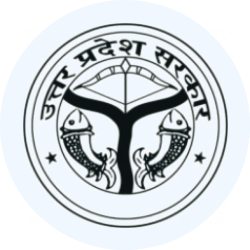UPPSC (UP) Exam > UPPSC (UP) Questions > When was the Quit India proposal ratified?a)1...
Start Learning for Free
When was the Quit India proposal ratified?
- a)1930
- b)1942
- c)1925
- d)1916
Correct answer is option 'B'. Can you explain this answer?
Verified Answer
When was the Quit India proposal ratified?a)1930b)1942c)1925d)1916Corr...
The Quit India proposal was ratified on August 7-8, 1942, marking a significant moment in the Indian independence movement.
View all questions of this test
Most Upvoted Answer
When was the Quit India proposal ratified?a)1930b)1942c)1925d)1916Corr...
Quit India Movement
The Quit India Movement was a significant movement launched by Mahatma Gandhi on August 8, 1942, demanding an end to British rule in India. It aimed to bring the British to the negotiating table by making it impossible for them to govern India.
Ratification of the Proposal
The Quit India proposal was ratified in 1942, which means it was officially approved and adopted. This ratification marked the beginning of one of the most intense phases of the Indian independence movement.
Importance of the Ratification
- The ratification of the Quit India proposal signified a united front against British colonial rule.
- It mobilized millions of Indians to participate in non-violent civil disobedience against the British government.
- The movement had a profound impact on the course of Indian history and played a crucial role in ultimately leading to India's independence in 1947.
Conclusion
The Quit India Movement was a pivotal moment in India's struggle for independence, and the ratification of the proposal in 1942 marked the beginning of a nationwide movement that shook the foundations of British rule in India.

|
Explore Courses for UPPSC (UP) exam
|

|
Question Description
When was the Quit India proposal ratified?a)1930b)1942c)1925d)1916Correct answer is option 'B'. Can you explain this answer? for UPPSC (UP) 2025 is part of UPPSC (UP) preparation. The Question and answers have been prepared according to the UPPSC (UP) exam syllabus. Information about When was the Quit India proposal ratified?a)1930b)1942c)1925d)1916Correct answer is option 'B'. Can you explain this answer? covers all topics & solutions for UPPSC (UP) 2025 Exam. Find important definitions, questions, meanings, examples, exercises and tests below for When was the Quit India proposal ratified?a)1930b)1942c)1925d)1916Correct answer is option 'B'. Can you explain this answer?.
When was the Quit India proposal ratified?a)1930b)1942c)1925d)1916Correct answer is option 'B'. Can you explain this answer? for UPPSC (UP) 2025 is part of UPPSC (UP) preparation. The Question and answers have been prepared according to the UPPSC (UP) exam syllabus. Information about When was the Quit India proposal ratified?a)1930b)1942c)1925d)1916Correct answer is option 'B'. Can you explain this answer? covers all topics & solutions for UPPSC (UP) 2025 Exam. Find important definitions, questions, meanings, examples, exercises and tests below for When was the Quit India proposal ratified?a)1930b)1942c)1925d)1916Correct answer is option 'B'. Can you explain this answer?.
Solutions for When was the Quit India proposal ratified?a)1930b)1942c)1925d)1916Correct answer is option 'B'. Can you explain this answer? in English & in Hindi are available as part of our courses for UPPSC (UP).
Download more important topics, notes, lectures and mock test series for UPPSC (UP) Exam by signing up for free.
Here you can find the meaning of When was the Quit India proposal ratified?a)1930b)1942c)1925d)1916Correct answer is option 'B'. Can you explain this answer? defined & explained in the simplest way possible. Besides giving the explanation of
When was the Quit India proposal ratified?a)1930b)1942c)1925d)1916Correct answer is option 'B'. Can you explain this answer?, a detailed solution for When was the Quit India proposal ratified?a)1930b)1942c)1925d)1916Correct answer is option 'B'. Can you explain this answer? has been provided alongside types of When was the Quit India proposal ratified?a)1930b)1942c)1925d)1916Correct answer is option 'B'. Can you explain this answer? theory, EduRev gives you an
ample number of questions to practice When was the Quit India proposal ratified?a)1930b)1942c)1925d)1916Correct answer is option 'B'. Can you explain this answer? tests, examples and also practice UPPSC (UP) tests.

|
Explore Courses for UPPSC (UP) exam
|

|
Signup for Free!
Signup to see your scores go up within 7 days! Learn & Practice with 1000+ FREE Notes, Videos & Tests.























